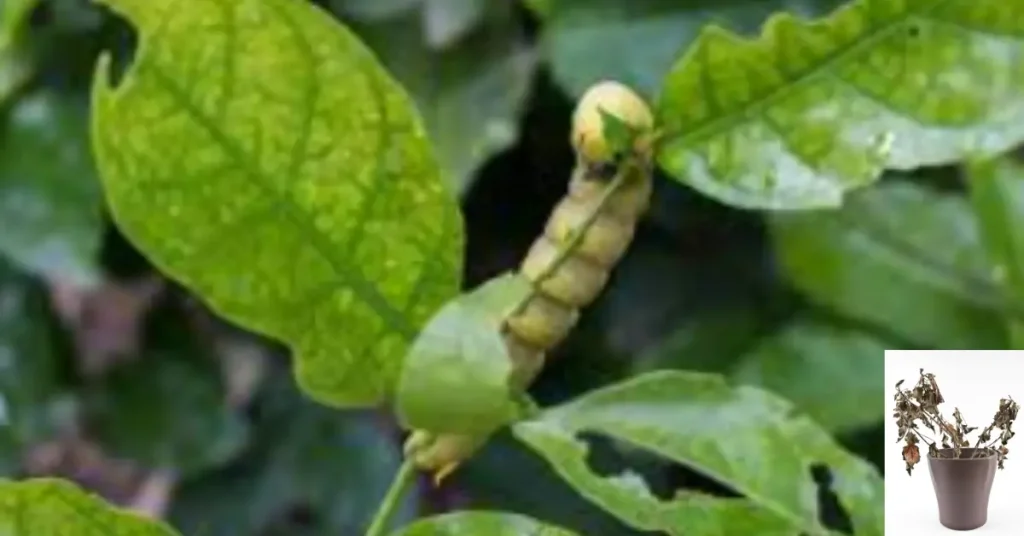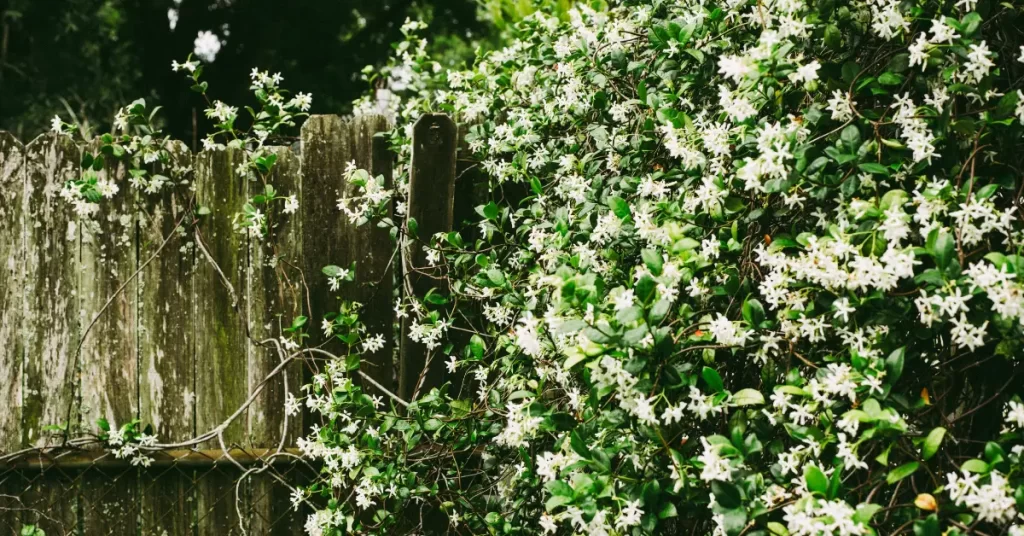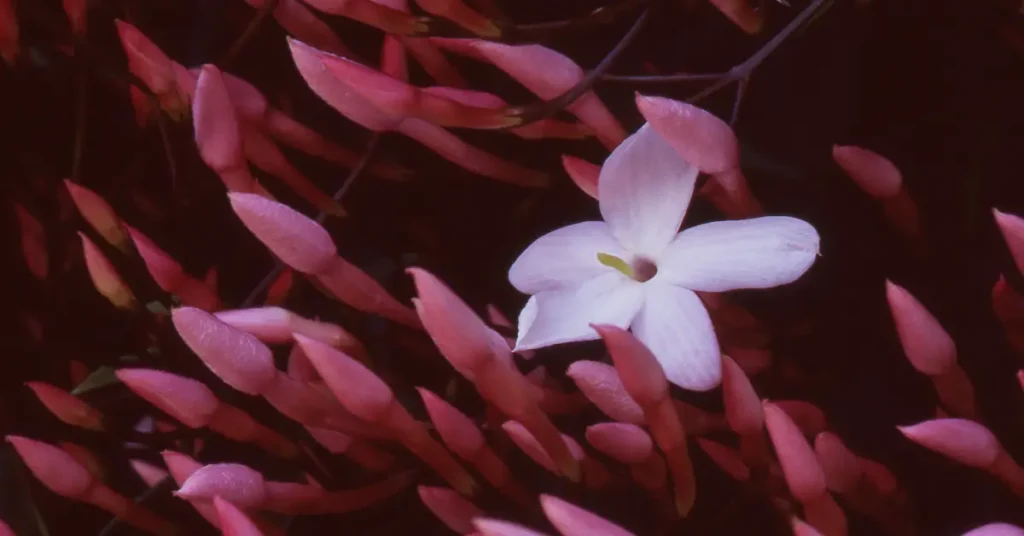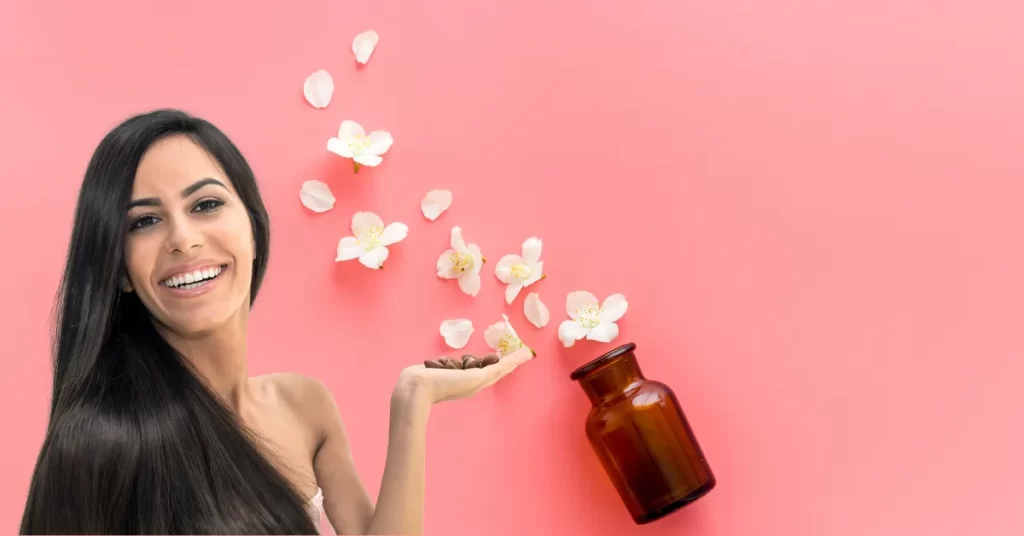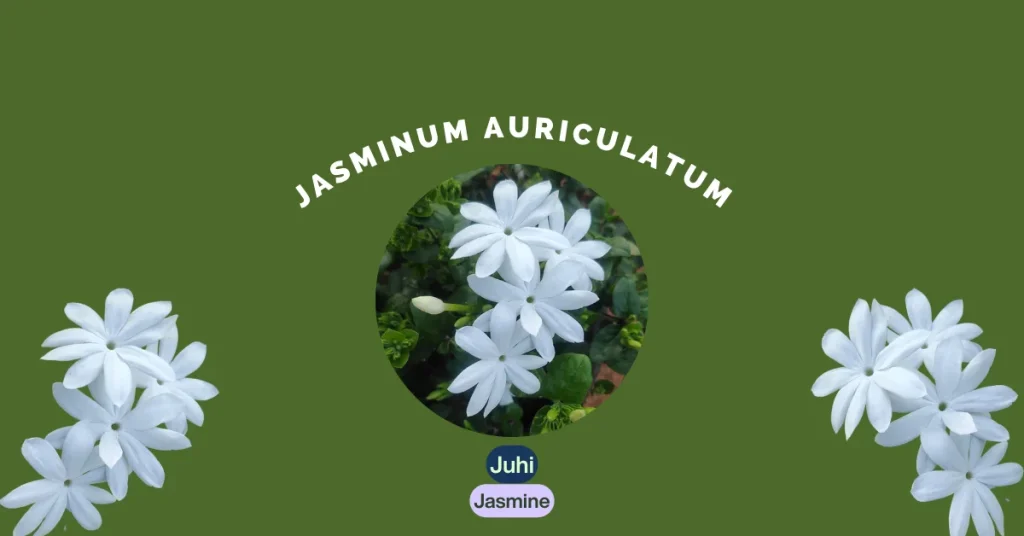Star Jasmine:Suitable Zones, Growing, Benefits and Problems
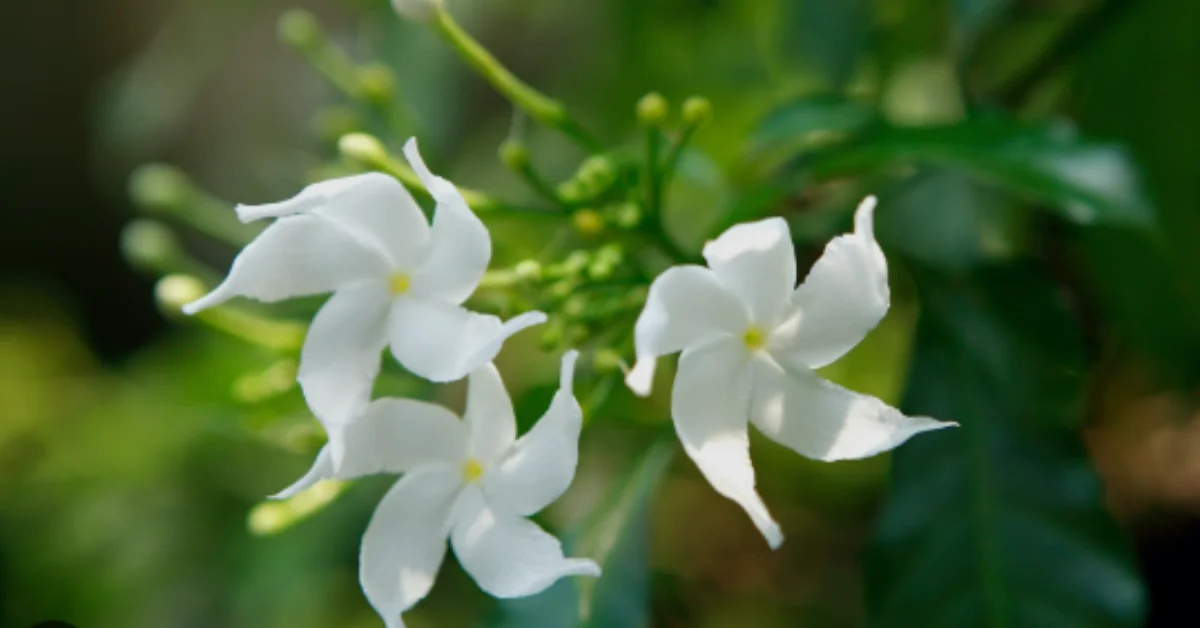
A fast-growing and aromatic evergreen vine with sweet fragrance, star jasmine (Trachelospermum jasminoides) provides great coverage and privacy as a climbing or creeping vine and attracts the bees and pollinators. Native to China and Japan, the plant is also incredibly popular in California and the Southeastern United States. Star jasmine grows well in warm environments and it requires to be protected in winter.
Jasmine star can grow to impressive heights (upto 20 Feet), which makes it a great choice as a house climbing vine for trellises, walls, and pergolas. This plant specie is popular because of its ability to adapt to a wide range of soil types and climates, as well as its alluring appearance.
While walking through a yard with this easy-to-grow vine, you will likely smell the bright star shaped white flowers. Small, shiny evergreen leaves complement the star-shaped blooms.
Get ready to learn characteristics, star jasmine zones, toxicity, what to care about for star jasmine, how to grow star jasmine, propagation, companion plants, benefits, star jasmine problems and care, and all the related concerns.
Fact: Star Jasmine is not a True Jasmine
Characteristics
| Common Names | Star jasmine, Confederate jasmine, Confederate jessamine, and Chinese star jessamine. |
| Botanical Name | Trachelospermum jasminoides |
| Family | Apocynaceae |
| Soil Type | A moist, well-drained soil |
| Soil pH | slightly acidic (pH 5.5 – 6.5). |
| Sun exposure | Full Sun to Partial Shade |
| Bloom time | From Late spring through summer. |
| Flower Color | White |
Star Jasmine Zones
It’s typically suited to USDA hardiness zones 8 to 10, although it may be able to survive in zone 7 with some winter protection. 8 to 10 zones include the regions with mild winters and warm summers, such as the southern United States and parts of the West Coast.
| USDA Hardiness Zone | Regions |
|---|
| Zone 8 | Gulf Coast states (Texas, Louisiana, Mississippi, Alabama, and Florida), parts of the West Coast (California, Oregon, and Washington), and some inland regions in the South and Southwest. |
| Zone 9 | Coastal areas of the Southeast (Georgia, South Carolina, parts of North Carolina, and Florida), southern Oregon, southern Arizona, southern Nevada, southern Utah, southern New Mexico, and some inland regions in California. |
| Zone 10 | Southern Florida, the southernmost parts of Texas, coastal areas of southern California, Hawaii, Puerto Rico, and other tropical regions. |
Unsuitable Zones
Zones with consistently cold winters, such as zones 6 and below, are not suitable for star jasmine. The plant may struggle to survive or may not survive at all in these climates.
Toxicity
I always recommend the houseplants that are pets and children’s health friendly. Toxicity of the plants should always keep in mind before planting a new plant in your house garden. Some varities of jasmine are non-toxic and some are highly toxic for pets and human beings. Star jasmine is a non-toxic plant, however keep your pets and children away for accidental ingestion.
Educate children about the plants in your garden and hygiene practices.
Read Full Article: Star jasmine poisonous
What To Care About For Star Jasmine
Light
A variety of garden settings can benefit from Star Jasmine’s ability to adapt to light exposure. It generally prefers full sun to partial shade. Direct sunlight for several hours each day as well as filtered or dappled sun are both suitable growing conditions. At least six to eight (6-8) hours of sunlight each day is necessary for it to bloom effectively.
In shady areas, the plant grows slower and produces fewer flowers. A plant’s health and bloom are dependent on maintaining a balance between protection from burning, intense sunlight, especially in hotter climates.
Remember, your star jasmine may produce fewer blooms if it is shaded by larger companion plants or trees and spends most of its time in shade.
Water
Water is Life. It is important to water these hardy vines consistently during their early growth stages. Regular watering is necessary when planting star jasmine to help the roots establish themselves. Provide deep-water your plants once a week during dry spells.
I do recommend to water container plants more frequently. However, monitor the local climate conditions and adjust your watering schedule accordingly.
Soil
Even though star jasmine doesn’t care too much about the soil, it grows best in a mix that is moderately moist and well-drained. When planting multiple plants of star jasmine as ground cover, make sure they are spaced out at least 5 feet apart. Also, it thrives in pH levels ranging from 5.5 to 6.5
Being an Agronomist, i advise to adding organic matter, such as compost, before planting. It enhances the soil structure and increase water retention.
Read: Soil Types
Temperature and Humidity
This evergreen vine thrives in moderate to warm climates with temeprature range 20 to 30 ℃ (68 to 86 ℉) and thrives in USDA zones 8-10. While it is tolerant of short periods of frost. Those living in colder regions should consider planting Star Jasmine near sheltered walls or with winter protection. They may go with the winter jasmine also.
Star jasmine thrives best in moderately humid conditions. Humidity is also important for Star Jasmine. The plant thrives at higher levels. In dry spells, mist the plant or place a tray of water near it to maintain an optimal moisture balance. Your Star Jasmine will flourish if you pay proper attention to its temperature and humidity.
Fertilizer
Fertilizer is also an important part of caring for Star Jasmine. Using the right fertilizer can significantly improve these plants’ growth and more blooms. Use a balanced fertilizer such as 10-10-10 or 5-10-10 to fertilize star jasmine. In spring, fertilize after new growth occurs, but before flower buds appear.
Every six weeks, fertilize the plants during the season. Avoid over-fertilizing your plant, as too much can damage it. Follow the fertilizer packaging’s instructions.
Helpful Read: Fertilizers ForJasmine Plant
Growing Star Jasmine
Where to Plant Star Jasmine?
The star jasmine grows well in USDA Hardiness Zones 8-10. It can survive in Zone 7b, but it may require winter protection. It can tolerate partial shade, but it flowers best with at least six hours of full sunlight. In hotter climates, protect from the afternoon sun. Star jasmine can also be treated as an annual in areas where it is not hardy, or brought indoors during winter.
This evergreen jasmine must be protected from cold and drying winds. Encourage plants to grow in a desired direction by providing some support for them. Growing star jasmine in pots is possible and easy; it doesn’t need deep soil to thrive.
Propagating Star Jasmine
Increasing the number of Star Jasmine vines in your garden and enhancing its beauty is easy by propagating these fragrant vines. Star Jasmine can be propagated with a few straightforward steps and can be enjoyed in multiple areas of your outdoor space.
Cuttings from an established parent plant is the best way to propagate star jasmine.
- Take cuttings of the parent plant at least 6 inches long just below the node (where a leaf or bud emerges).
- Use rooting hormone powder to treat the cut end of the piece, and plant it in a well-moisturized pot filled with sand.
- Keep the planter over a heating mat or in an area around 75 degrees Fahrenheit and cover it with a plastic bag or dome to keep moisture in.
- Once the roots begin to develop, transplant the plant to a slightly larger container before eventually transplanting it into the ground.
How to Grow Star Jasmine from Seed?
I do advise growing through cuttings. Starting star jasmine from seed requires more patience than propagating from cuttings. The main steps are as follows:
- Soak the seeds overnight before planting for faster germination.
- Make sure the soil in small pots is moist and well-draining.
- Bury two seeds in each pot about one inch deep.
- Until the seeds germinate, keep the soil moist.
- Thin each pot to one plant once the seedlings are several inches tall.
- When the seedlings begin to outgrow the pots, transplant them.
Growing Star Jasmine in Pots (indoors)
- Select a pot with a minimum diameter of 18 inches (45 cm) and drainage holes at the bottom. A larger pot gives your Star Jasmine more room to grow.
- For best results, use a potting mix that drains well. Also, sand can improve drainage. Use an all-purpose potting mix and pots that are three gallons or larger when growing star jasmine in pots.
- Plant your Star Jasmine at the same depth as it was in its nursery container. If planted too deeply, it can cause root rot.
- Star Jasmine needs some support to climb as it grows. Help the vine establish itself by placing a trellis or stakes in the pot.
- Give your potted Star Jasmine at least 4-6 hours of sunlight every day. Let the top inch of soil dry between waterings, while keeping the soil moist.
- To maintain its shape and size, prune your Star Jasmine. As a result, it looks attractive and grows healthier.
- Potted Star Jasmine should be kept indoors or sheltered if you live in a region with cold winters. Cold temperatures can damage the vine, so keep it protected from them.
- The star jasmine should be checked every 2-3 years to see if it has outgrown its pot. If it looks root-bound, consider repotting it into an even larger container.
Companion Planting
Companion planting is a old gardening practice that involves growing different plant species in close proximity to one another to mutually benefit their growth and productivity. This is based on the principles of ecological relationships. Plants work together to enhance soil fertility, repel pests, attract beneficial insects, provide shade or support, and improve overall garden resilience.
Three Sisters Planting is a traditional Native American technique involves planting corn, beans, and squash together. The corn provides support for the beans to climb, while the beans fix nitrogen in the soil for the benefit of all three sisters. The squash acts as a living mulch, suppress the weeds and conserve soil moisture.
Flowering plants such as marigolds, nasturtiums (Tropaeolum), and calendula throughout the garden attract beneficial insects like ladybugs and hoverflies, which prey on aphids and other garden pests.
These flowers also add color and beauty to the garden.
What Plants Go Well with Star Jasmine?
I do recommend the following plants with star jasmine:
- Lavendar
- Lilacs
- Rose
- Clematis
- Nasturtium
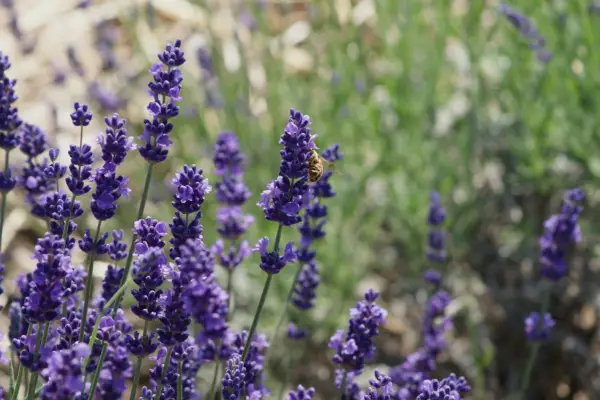
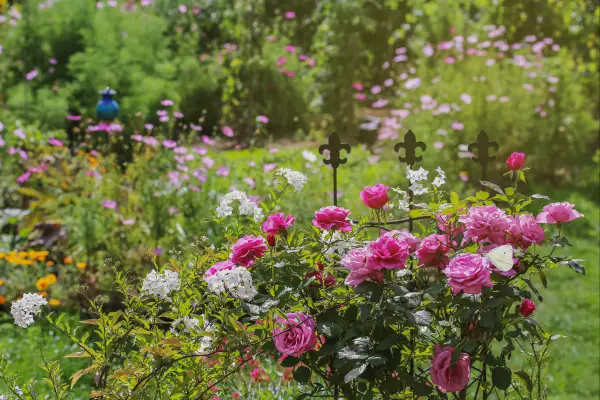

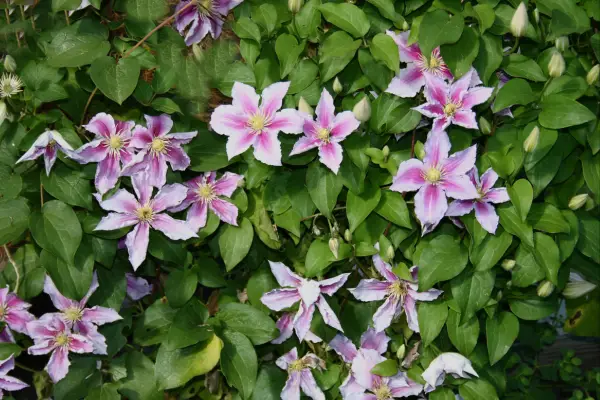

Star Jasmine Benefits
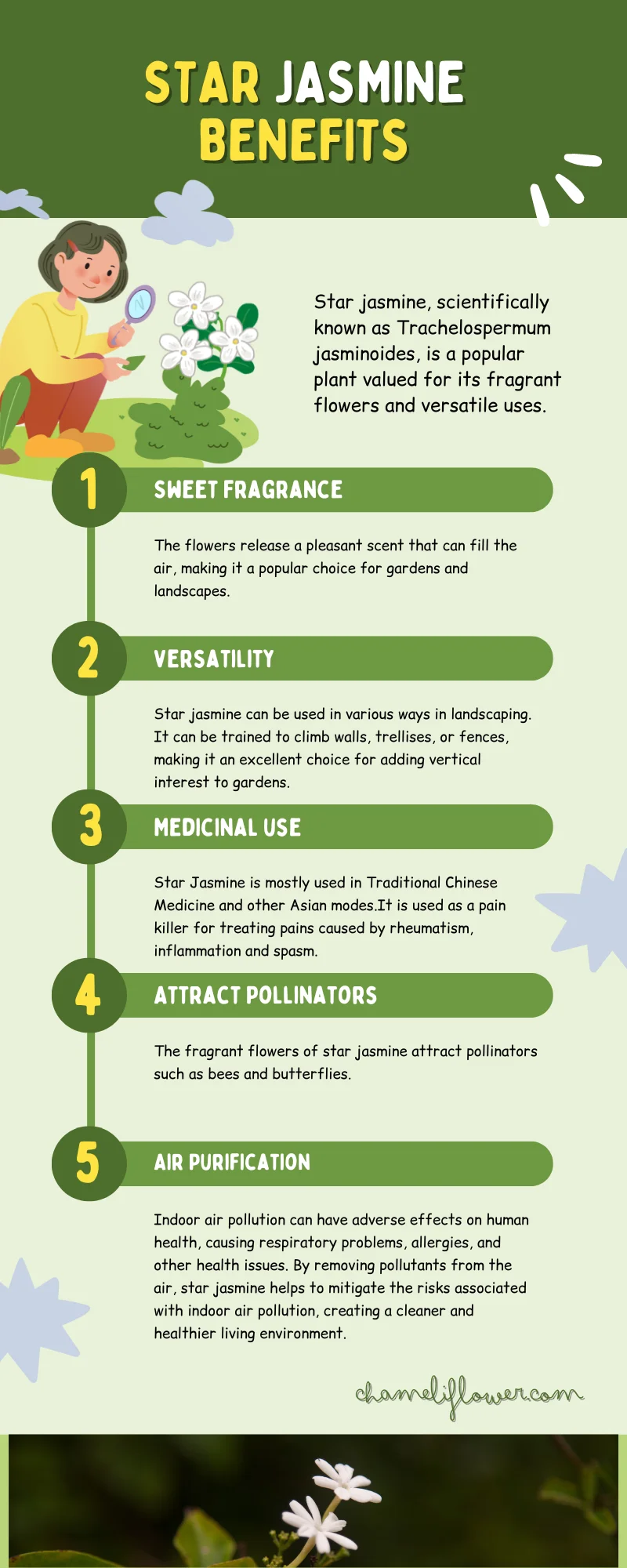
Common Plant Problems and Solutions for Star Jasmine
There are several common problems that may arise with Star Jasmine. With the right solutions, you can ensure that your Star Jasmine thrives and looks its best. Here are a few issues we need to consider:
Yellow Leaves
Cause: Yellowing of leaves is a common problem with Star Jasmine. This can be caused by various factors, such as overwatering, nutrient deficiencies, or insufficient sunlight.
Solution: To resolve this issue, first assess the water requirements of your plant. Maintain a well-draining soil by not keeping it too wet. The Star Jasmine plant thrives in partial to full sunlight. During the growing season, feed your plant a balanced, slow-release fertilizer if you suspect a nutrient deficiency. To encourage healthy growth, prune any yellowed leaves.
Root Rot
Cause: The root rot that attacks Star Jasmine is a silent killer. It thrives in the shadows, beneath the soil. A smell of decay, discolored roots, or wilting leaves are all signs that the plant needs attention.
Solution: You should improve soil drainage, reduce the amount of water you use, and make sure the plant does not sit in water overnight.
Pests (e.g., aphids, spider mites)
Plants can be weakened by insect pests infestations. If overlooked, they cause serious damages.
Solution: Inspect the plant regularly, treat infestations organically first with insecticidal soap or neem oil, and maintain good air circulation.
Winter Damage
Cause: When it comes to cold winter temperatures, Star Jasmine is susceptible to damage, especially in regions that experience harsh winters.
Solution: During the winter, potted Star Jasmines should be moved indoors or to a sheltered location. Using mulch or frost cloth is recommended if your Star Jasmine is planted in the ground. In spring, prune back damaged or frost-killed growth to encourage new, healthy growth. Your Star Jasmine will survive the cold better if you provide it with adequate winter protection.
People Ask
Q: What is the best support for star jasmine?
Trellis and wires are the best support.
Q: Is star jasmine and common jasmine same?
They belong to different families. Satr jasmine belongs to Apocynaceae and whereas common jasmine belongs to Oleaceae.
Q: What is the best way to propagate star jasmine?
Cuttings is the best propagation method.
Conclusion
With its fragrant blooms and attractive foliage, star jasmine is a versatile and captivating plant for any garden or indoor space. Taking the steps outlined in this guide will help gardeners cultivate and enjoy the beauty of star jasmine with ease.The right care and attention will enable this enchanting plant to flourish and bring joy for long time.

I am Yasir Riaz, an Agronomist for more than a decade. Helping local farmers and Gardeners to improve their crops and Gardens and overall productivity. In addition to my work in agriculture, I have also delved into the digital world as an SEO writer and blogger. Through my blog, I aim to educate and inspire others about the Chameli Flower (Jasmine).

